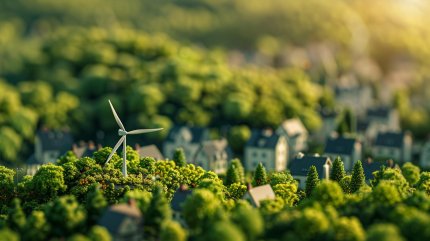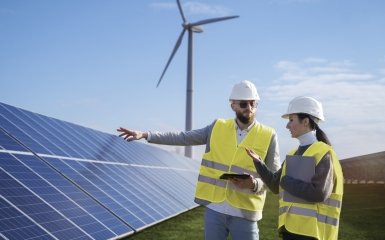Problems with climate change and environmental pollution force the world to look for alternatives to traditional energy sources. Many countries are quite actively moving away from the old standards, using the so-called "green" or "renewable" energy, emphasizes Ivan Geliukh, chairman of the board of the D.Trading company.
Points of attention
- Green electricity is energy that is produced from inexhaustible sources.
- Ivan Geliukh spoke in detail about the types of "green" energy sources.
- The sun, wind, water and other natural resources help reduce human impact on nature.
What is green electricity?

The International Energy Agency (IEA) defines renewable energy as "derived from natural processes that are continuously renewed".
That is, when we talk about green electricity, we mean that which is produced from inexhaustible sources that do not harm the planet.
First of all, sunlight and wind, as well as water, biomass or the natural heat of the earth.
Types of "green" energy sources
Sunlight, which is collected on special panels and then converted into electricity. It does not create harmful emissions, but the panels themselves are quite expensive, because their production requires certain resources.
The service life of a solar panel is usually 25-30 years. After that, it is subject to recycling. Some parts, such as aluminum or glass, are almost entirely recycled and reused to produce new panels.

Ivan Geliukh
Chairman of the board of the D.Trading company
Wind energy is also considered ecological. Huge windmills capture the force of the wind and generate electricity. The service life of one windmill is approximately 20-25 years. Afterwards, many components such as metal parts and electronics can be recycled, but the issue of efficient blade disposal remains a major challenge for the industry. They are made of composite materials - a mixture of plastic and fiberglass, which is difficult to recycle.
Hydropower, which uses the power of water, is another option. Large hydroelectric plants produce a lot of energy, but at the same time they sometimes change the ecosystem of rivers; small ones are a less harmful option.
Bioenergy is the process of producing electricity from biomass, i.e. organic materials such as plants, wood, agricultural or household organic waste. The basic idea is that these materials are burned or chemically treated, turning into heat or gas, which is then used to generate electricity.
It is considered a greener source of energy because burning biomass emits significantly less carbon dioxide compared to fossil fuels. An additional plus is that the use of biological waste reduces the load on landfills.
Finally, there is geothermal energy, which uses heat from deep within the Earth to generate electricity or heat.
In places with hot springs or volcanic activity, wells are drilled to access hot water or steam. This pressurized force is directed to turbines that spin and generate electricity.
After cooling, the water returns to the ground to heat up again, creating a perpetual cycle. This is a completely ecological and renewable way of using energy.
"Green" electricity in Europe

In EU countries, green electricity is developing very quickly. For example, according to a report by the energy think tank Ember, in 2023, the share of renewable sources in the production of electricity here exceeded the 40% mark for the first time, reaching 44%. The main increase was due to wind and solar energy, which now provide almost 30% of all electricity in the EU.
The European Commission has already set an ambitious goal for 72% of all electricity in the EU to come from renewable sources by 2030. This implies a doubling of capacities in this field, hence an increase in investments, which in 2023 already amounted to 110 billion euros.
And while prices for renewables have risen due to supply issues, they still remain competitive. For example, Spain is heavily investing in solar energy and has already seen electricity costs drop during periods of high solar production.
Green electricity is already changing our lives by offering clean and renewable energy sources. Sun, wind, water and other natural resources help reduce our impact on nature.

Ivan Geliukh
Chairman of the board of the D.Trading company
Europe is demonstrating that the transition to such energy is very real, and although there are still some questions about other sources, the future of the world is definitely in renewable energy.

